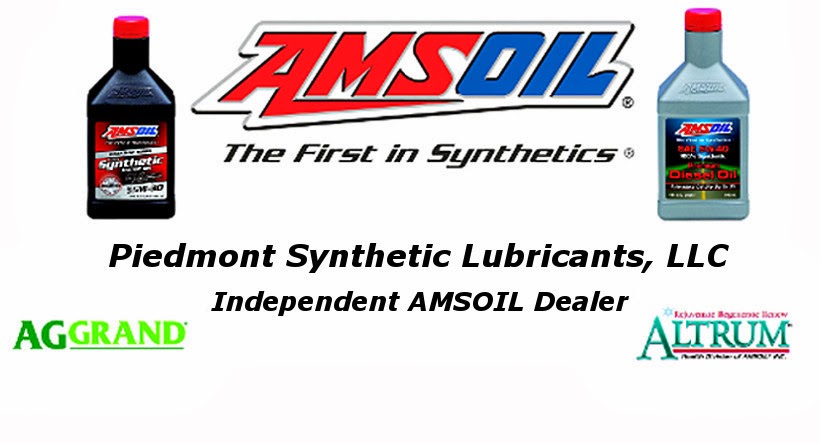When it comes to our cars, we don't have to worry much about storage unless you have a "sunny day" classic that you don't drive during the winter or when it's raining. But when it comes to our powersports and lawn and garden equipment that we only use sporadically, proper storage is essential to ensure that our "toys" provide us with many years of service. With winter approaching, many of us will be putting motorcycles, ATVs, boats, personal watercraft, lawnmowers and other power equipment into storage. Though it may be tempting to park equipment out of sight after the final use and hope it starts again next season, such action (or inaction) can have serious consequences. Engines left unprepared for storage can suffer from fuel degradation, condensation and corrosion. The results can lead to poor performance or costly repairs or replacement, so it makes sense (and cents!) to prepare equipment for the off-season so it’s protected and ready for springtime use. Even if you live in a moderate winter climate, extended periods of non-use warrant following these winterizing strategies. AMSOIL provides a host of products that will protect your equipment during these periods of inactivity.
There is no "one-size-fits-all" when it comes to how to prepare equipment for storage. Different equipment requires different care but there are some common storage procedures.
Motorcycles
While storing your bike in your house might be the best thing for your bike, it may not be the best thing for your house or your marriage. If storing your bike the normal way, either in the garage or outside, here are the things that you want to keep in mind:
1. Wash and dry – Road contaminants can permanently stain and corrode paint and chrome and you'll never get it off.
2. Change oil – Combustion and its by-products cause oxidation, which can be detrimental to internal engine components. Fresh oil protects engines against such unseen damage.

3. Stabilize fuel – Gasoline can begin to degrade in as little as 30 days, forming gums and deposits on engine components. Modern-day fuel is not the greatest to say the least. Treating fuel with AMSOIL Gasoline Stabilizer can prevent degradation and carburetor and injector problems when the bike comes out of storage.
4. Remove battery – If storing for an extended period like over the winter, remove the battery or connect a float charger to keep it at full capacity without risk of damage from overcharging (a float charger is a very small charger that keeps the battery charged over long periods - it's not designed to charge a dead battery).
5. Lift off ground – Use a speedy stand or ramp to prevent flat spots - this is ideal but not crucial.
6. Cover – Cover the bike to protect it from light and dirt, especially if you store it outside. If it is outside make sure you allow some air circulation in order to help prevent rust.
Outboard Engines (Two- and Four-Stroke)
Unless you are a professional fisherman, most outboard motors are used sporadically during the season: they're put in the water in the spring, used on weekends, they sit during the week, taken out of the lake in the fall and put in the garage for the winter. While that may work for a year or two, some caretaking is necessary to provide trouble-free operation.
1. Stabilize the fuel – If storing four months or longer, the most important thing is to stabilize fuel in both two and four stroke engines with AMSOIL Gasoline Stabilizer after the final use. AMSOIL Quickshot® provides fuel stabilization for periods less than four months. Pour the Gasoline Stabilizer or Quickshot in the last tank of gas, run it through the motor and you should be good to go. Note that no Gasoline Stabilizer is required if you’ve routinely been using Quickshot and the engine will be stored fewer than four months.

2. Change the lower unit oil – this is a must! If any water has invaded the lower unit over the summer and it’s left there during storage, rust can form on bearings, the lower unit gears can degrade, bearings can rust out and seals can degrade - you're looking at a very expensive fix if any of these things happen.
3. Change the oil and filter (in four-stroke engines) – Most four-stroke engines use a separate spin-on filter. Change the oil and filter for protection against oxidation and rust and corrosive acids left over from combustion. Changing the oil in the fall protects the engine during storage plus you've got fresh oil for use in the spring.
Personal Watercraft (PWC)
PWCs present some unique challenges and storage procedures depending upon the climate where it's been used and the type of environment it's been exposed to.
1. Stabilize fuel during last use with AMSOIL Quickshot or AMSOIL Gasoline Stabilizer by running it the last tank of gas.
2. Wash and dry equipment - this is very important if your PWC was used in salt water. Get the salt water off the hull, especially on the inside of the hull in the bilge where corrosion can start.
3. Flush with storage antifreeze if the PWC is going to be stored in subfreezing temperatures. With PWCs, there will always be water in portions of the system. What you need to do is replace that water with an antifreeze because if that water freezes and the engine block or cylinders crack, you could be looking at very expensive repairs. Review your owner's manual - if you don't feel that you are qualified to perform this task, take it to your mechanic.
4. Flush with freshwater if the PWC is used in saltwater. Saltwater degrades aluminum parts very quickly.
5. Fog engine with AMSOIL Engine Fogging Oil (if applicable) whether a two or four-stroke engine. Anytime you're dealing with operating an engine in a wet environment, fogging the engine is a good insurance policy to prevent rust and corrosion from forming. To use, with the engine running (use the throttle to keep the engine running), spray the fogging oil into the carburetor. When a decent amount of blue smoke appears out of the tailpipe, the engine is sufficiently fogged and you're done.
6. Remove the battery and store it in a warm, dry place off the ground if possible. You never want to leave the battery on a cold concrete floor.
7. Leave the seat open slightly to allow for airflow to the engine bay, cover the PWC and store indoors (preferably). Allowing for airflow is important in order to minimize rust and corrosion in the engine compartment. If storing outside and you don't want to leave the seat open, cover the PWC loosely in order to allow some airflow.
Lawn, Garden and Handheld
Lawn and garden and handheld equipment is some of the most neglected equipment on the planet in terms of storage. You use it to cut the grass or till the garden, you get done, kick it into the garage and bring it out once the lawn gets too long or the garden
 needs tilling again. It gets neglected, it doesn't get taken care of and that's why people have problems with it. This is work equipment, not the fun equipment, so we're talking lawn mowers, chain saws, tillers, pressure washers, weed whackers, etc. Because it is used for work, we really don't want to spend any extra time taking care of it so a little time spent before storage will save a lot of time (and money) later.
needs tilling again. It gets neglected, it doesn't get taken care of and that's why people have problems with it. This is work equipment, not the fun equipment, so we're talking lawn mowers, chain saws, tillers, pressure washers, weed whackers, etc. Because it is used for work, we really don't want to spend any extra time taking care of it so a little time spent before storage will save a lot of time (and money) later. 1. Stabilize the fuel with AMSOIL Gasoline Stabilizer or AMSOIL Quickshot. Rust and corrosion is a constant problem with this type of equipment and what you get is reduced life span if you don't take care of fuel degradation issues.
2. Change oil and filter (on four-stroke engines) at least once a year regardless of use (note that the owner's manual will supersede this). You really need to get out that old, acidified, corrosive, oxidized oil out and put new oil in.
3. Fog engine with AMSOIL Engine Fogging Oil (if applicable) – This is a good idea for four-stroke engines but fogging is a must for two-stroke engines if they are being stored for 30 days or more.
4. Wash off grass clipping, dirt, wood chips, etc. and apply AMSOIL MP Metal Protector to exposed metal parts to prevent rust (especially the blades).
5. Equipment is best stored indoors. If left outside, protect it with a cover.
Following these simple steps can keep your equipment in peak operating condition, even when it’s not in use for several months. An hour or two of preventive maintenance now means next spring you’ll be spending more time on the road, on the water or in the yard instead of in the shed tearing
apart dirty carburetors.
Thanks for Visiting This Post!
Questions and Comments are Always Welcome!
















